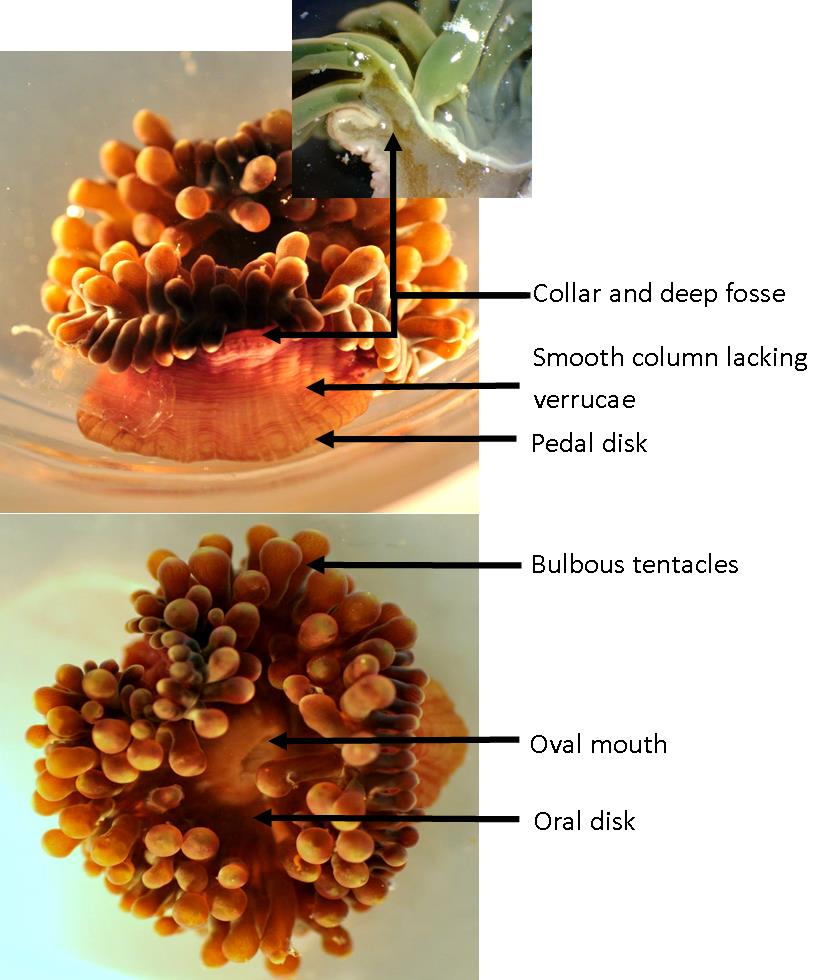|
External Morphology and Physical Description
The general morphology of E. quadricolor resembles that of an archetypal Actiniaria. The body column is tubular with a wide flattened pedal disk for adherence to the substratum. At the opposing end, the column culminates in a similarly flattened oral disk with an oval mouth in the center and fringed by a whorl of tentacles. More specifically, this species has a deep fosse and a flared column with a broader oral disk than pedal disk. Tentacles are arranged regularly and number between 76 and 300 depending on anemone size. Each tentacle is relatively long, though inner tentacles are 2-3 times longer than marginal ones (Fautin et al 2008). Tentacles may be cylindrical with little distal tapper or have a bulbous swelling just prior the tentacle tip or at the extreme tip (Fautin et al 2008). These bulbs, in addition to a smooth column lacking verrucae, adhesive invaginations, are diagnostic features for this species among symbiotic anemones (Fautin et al 2008).

Beyond these general and diagnostic traits the appearance of E. quadricolor can be incredibly diverse. Natural colouring is highly variable with 17 colour morphs identified amongst of 287 individuals documented in a study in Australia's Solitary Island (Scott & Harrison 2009). Colours; purple, cream, orange, green and brown were observed appearing in varied combinations on the column, oral disk and tentacles (Scott & Harrison 2009). Both overall size and tentacle shape can be highly variable, influenced by water depth or the presence or absence of symbiotic fish (Fautin et al 2008; Porat & Chadwick-Furman 2004). These factors in turn influence the extent to which an individual contracts or expands their tentacles, oral disk, column and pedal disk (Fautin et al 2008; Porat & Chadwick-Furman 2004).
Size also varies and is associated with colonial or solitary morphologies. Generally, expanded oral disk diameter ranges from less than 50 mm in shallow water on reef crests,where individuals may be solitary but more likely colonial, to over 400 mm solitary individuals in deeper water on reef slopes (Fautin et al 2008). Polyp size on reef slopes is influenced by expansion behaviour and growth rate which have been linked to the presence or absences of symbiotic anemone fish (Porat& Chadwick-Furman 2004). (This will be discussed further in the page on symbiosis). Shallow water and the presence of symbiotic fish has also been shown to correspond to increased prevalence of bulb tipped tentacles (Fautin et al 2008).
|